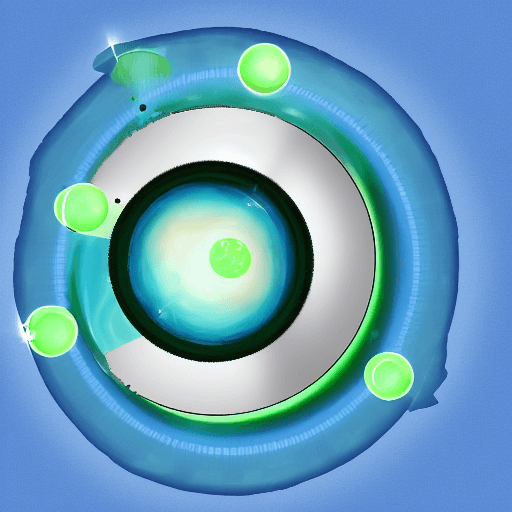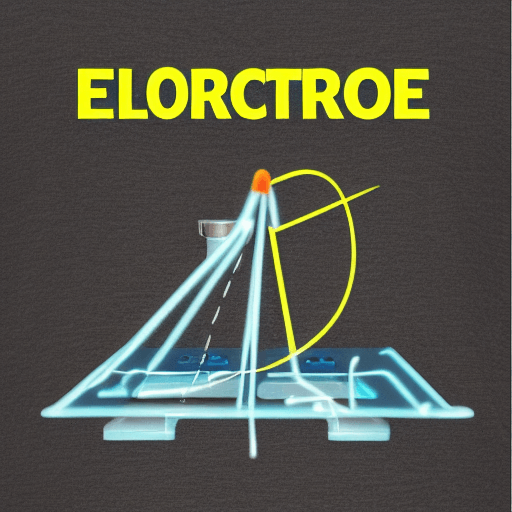Do you know what the common ion effect is?
It’s a phenomenon that occurs when two different types of ions (atoms or molecules that have an electric charge) are combined.
Let’s discuss the common ion effect in detail and provide some examples.

The common ion effect occurs when two solutions that are different in the concentration of a specific ion (an electrolyte) are mixed.
Explain It To A Child
The common ion effect is something that happens when a substance turns into ions in a solution. The ions change the balance between the reactants, which changes where the equilibrium is.
The common ion effect can have different effects depending on the type of electrolyte involved.
One example of the common ion effect is the precipitation of solid salts from two solutions that contain different concentrations of the same salt.
For example, if you mix a solution containing a high concentration of sodium chloride (NaCl) with one containing a low concentration of NaCl, the higher concentration of NaCl will precipitate out as solid crystals of sodium chloride.
What is the common ion effect and what are its effects
The common ion effect is a phenomenon that occurs when a substance dissolves in a solvent to form an ionic solution.
- The presence of the ions in the solution alters the equilibrium between the reactants, resulting in a shift in the position of the equilibrium.

This shift can have a significant effect on the solubility of the substance.
In general, the common ion effect decreases the solubility of a substance by reducing the number of ions available for reaction.
- The magnitude of the effect is determined by the strength of the electrolyte and the concentration of the ions in the solution.
- When weak electrolytes are present in high concentrations, the common ion effect can be very pronounced.
- In contrast, when strong electrolytes are present in low concentrations, the effect is much less pronounced.
Two applications of common ion effect
The common ion effect is a well-known chemical phenomenon with a variety of applications.

In its simplest form, the common ion effect refers to the fact that when a substance is added to a solution containing its ions, the solubility of that substance will decrease.
- This effect can be exploited in a number of ways.
- For example, it can be used to precipitate out unwanted ions from a solution.
- The common ion effect can also be used to adjust the pH of a solution by adding an acid or base that contains the desired ions.
In addition, the common ion effect can be used to increase the electrical conductivity of a solution by adding an electrolyte that contains ions with relatively high charge densities.
Ultimately, the common ion effect is a powerful tool that can be used to achieve a variety of different objectives in chemical and engineering applications.
Common ion effect on solubility answers
The common ion effect is the decrease in solubility of a slightly soluble ionic solid that occurs when there is an increase in the concentration of one of its ions in the solution.

This effect occurs because the increased concentration of the common ion lowers the driving force for the reaction by reducing the number of ions that are needed to complete the reaction.
As a result, the solubility of the solid decreases.
The common ion effect is often used to help explain why certain compounds are more or less soluble in water. For example, table salt (NaCl) is more soluble in water than silver chloride (AgCl).
This is because Na+ is much more common than Ag+, and thus the addition of Na+ to the solution decreases the solubility of AgCl by reducing the number of Ag+ ions that are needed to complete the reaction.
Similarly, calcium chloride (CaCl2) is more soluble in water than sodium chloride (NaCl). This is because Ca2+ is much more common than Cl-, and thus the addition of Ca2+ to the solution decreases the solubility of NaCl by reducing the number of Cl- ions that are needed to complete the reaction.
The common ion effect can also be used to help explain why some compounds are insoluble in water.
For example, copper sulfate (CuSO4) is insoluble in water because Cu2+ and SO42- are both very common ions, and thus the addition of either one of these ions to the solution reduces the solubility of CuSO4 by reducing the number of other ions that are needed to complete the reaction.
In general, the common ion effect will cause an increase in solubility when there is an increase in the concentration of a less common ion and will cause a decrease in solubility when there is an increase in the concentration of a more common ion.
What are common ion effect calculations?
Common ion effect calculations are used to determine the equilibrium concentration of a species in a solution.
The common ion effect occurs when a species is added to a solution that already contains its ions.
For example, if sodium chloride is added to a solution that already contains sodium ions, the concentration of chloride ions will decrease.
This is because the sodium ions will compete with the chloride ions for space in the solution.
As a result, the concentration of chloride ions will decrease, and the equilibrium concentration of sodium chloride will be lower than it would otherwise be. The common ion effect can be used to advantage in many situations, such as when making salt water more concentrated or when preventing the precipitation of certain compounds.
Understanding how to perform common ion effect calculations is essential for anyone who works with solutions.
Implications of the common ion effect
The common ion effect is a significant phenomenon in chemistry that has Implications for many different areas.
When two solutions containing ions are combined, the concentration of one of the ions may decrease.
This can have Implications for reactions between ions, precipitation reactions, and Titration curves. In addition, the common ion effect can be used to separate ions from the solution and purify water.
As a result, it is important to understand the Implications of the common ion effect in order to properly utilize it.
Examples of the common ion effect in action
There are numerous examples of the common ion effect in action. One example is when a salt dissolves in water, the resulting solution contains more ions than the pure water did.
This results in a higher concentration of ions in the solution, which lowers the freezing point of the water.
Another example is when carbon dioxide is dissolved in water to form carbonic acid, the concentration of hydrogen ions in the solution increases.
This increases the acidity of the solution, which can have a significant impact on plant life.
The common ion effect can also be seen when strong acids are added to weak bases, or when strong bases are added to weak acids.
In both cases, the resulting solution will have a higher pH than the pure starting materials.
These examples illustrate how the common ion effect can have a profound impact on solutions and their properties.
Thus, the common ion effect is an important consideration in many chemical reactions, particularly those involving salts and acids.
Understanding how it works can help chemists to control and optimize reactions to produce desired results.
Article Sources
Jacks of Science sources the most authoritative, trustworthy, and highly recognized institutions for our article research. Learn more about our Editorial Teams process and diligence in verifying the accuracy of every article we publish.
